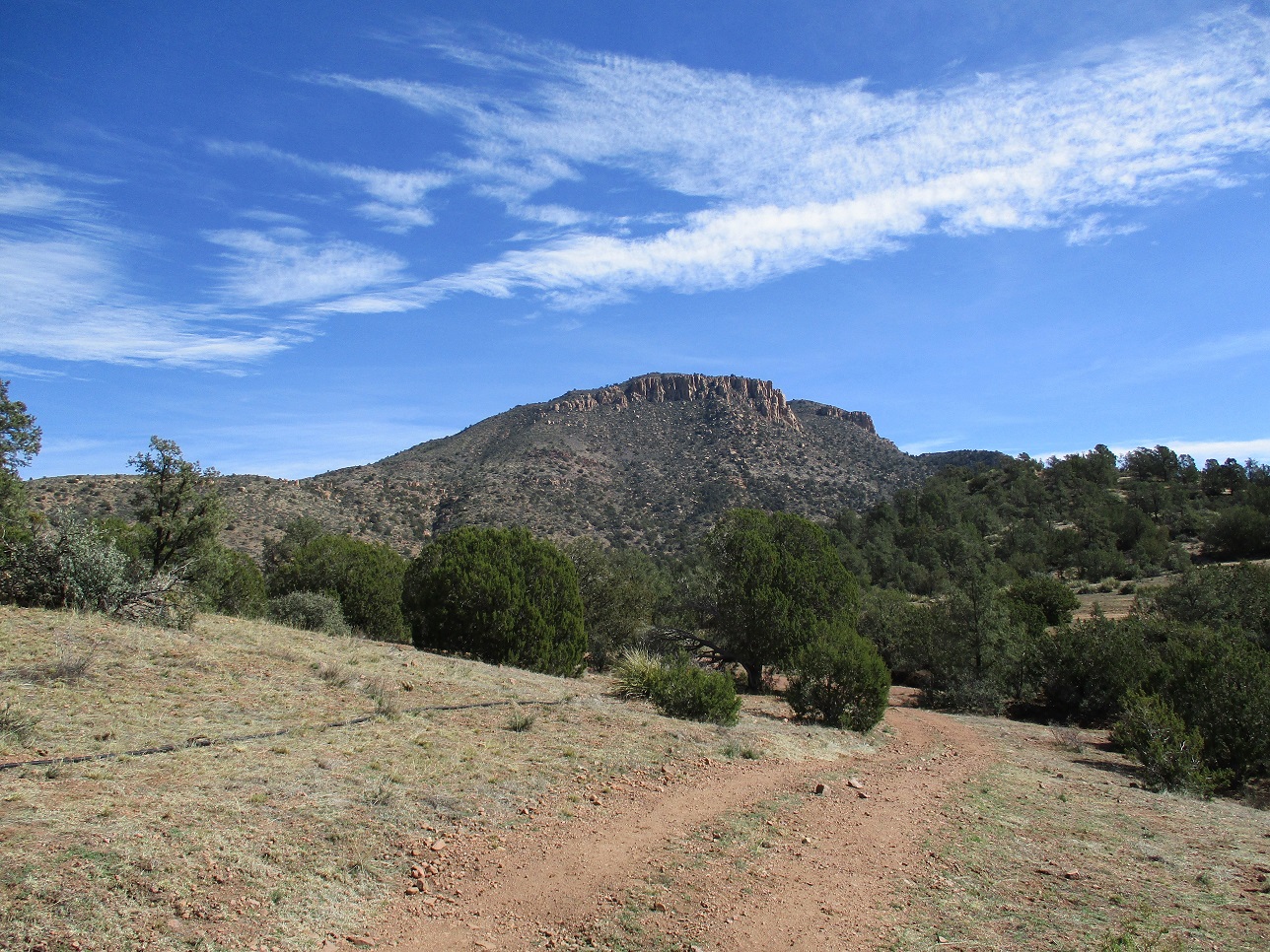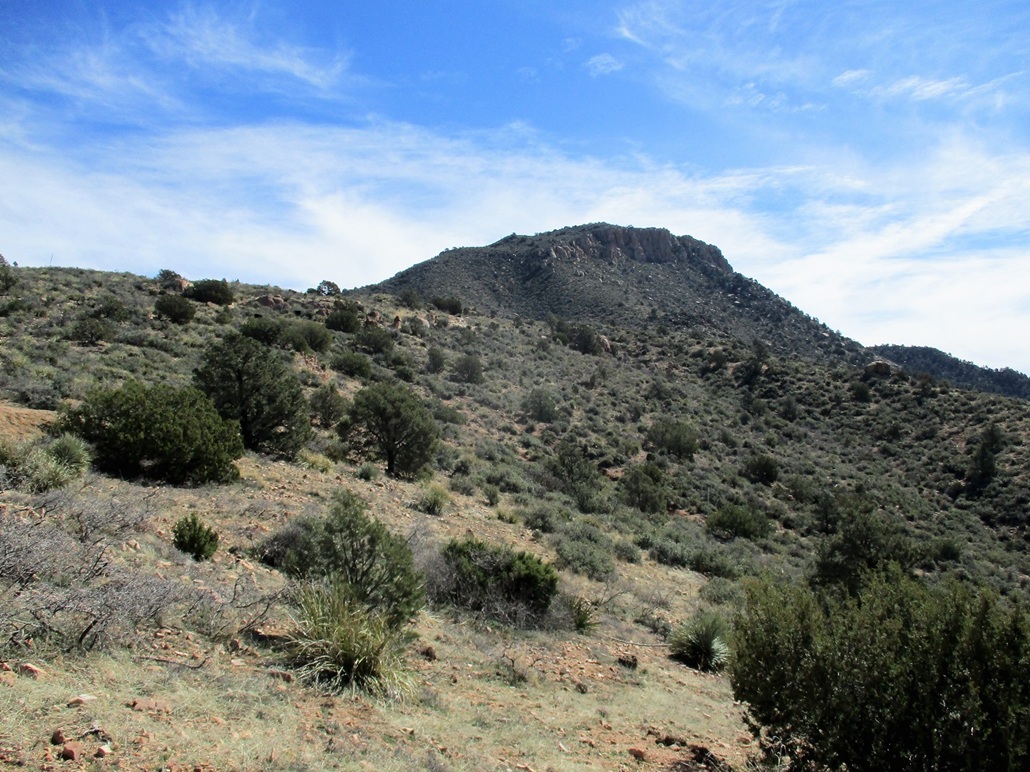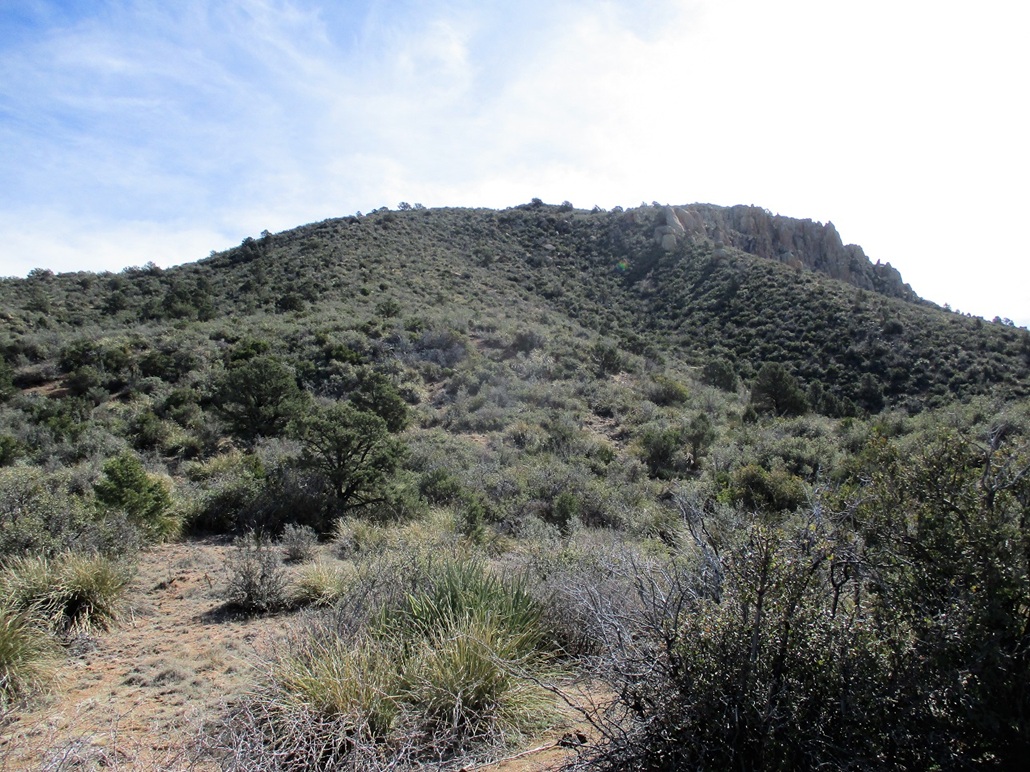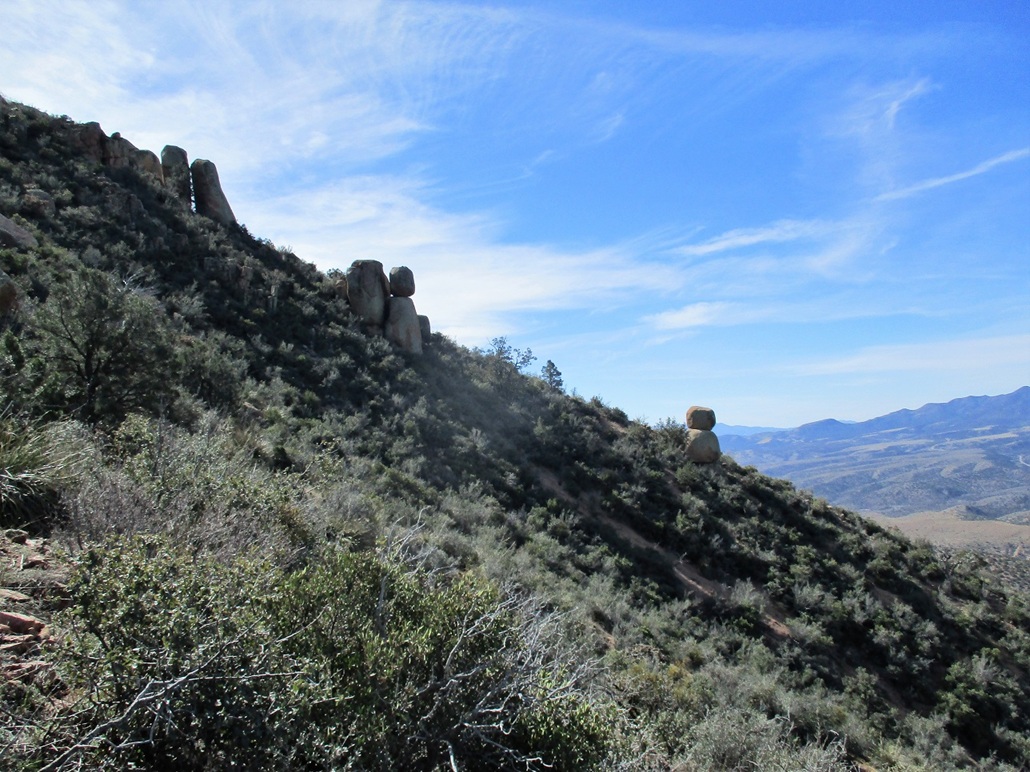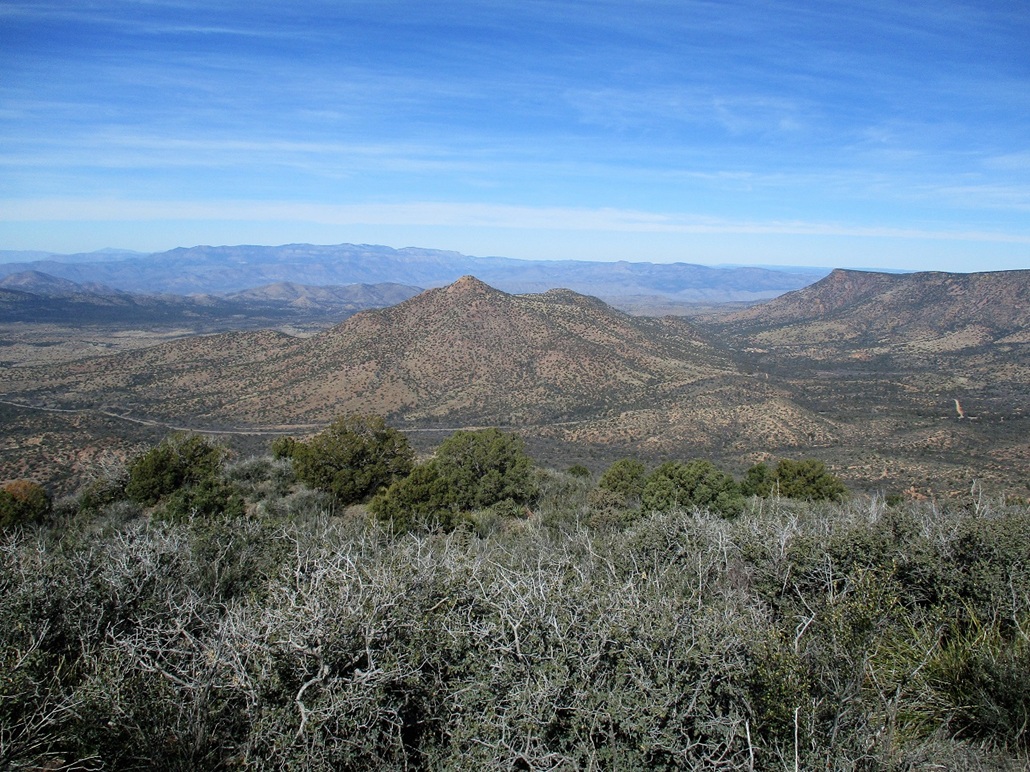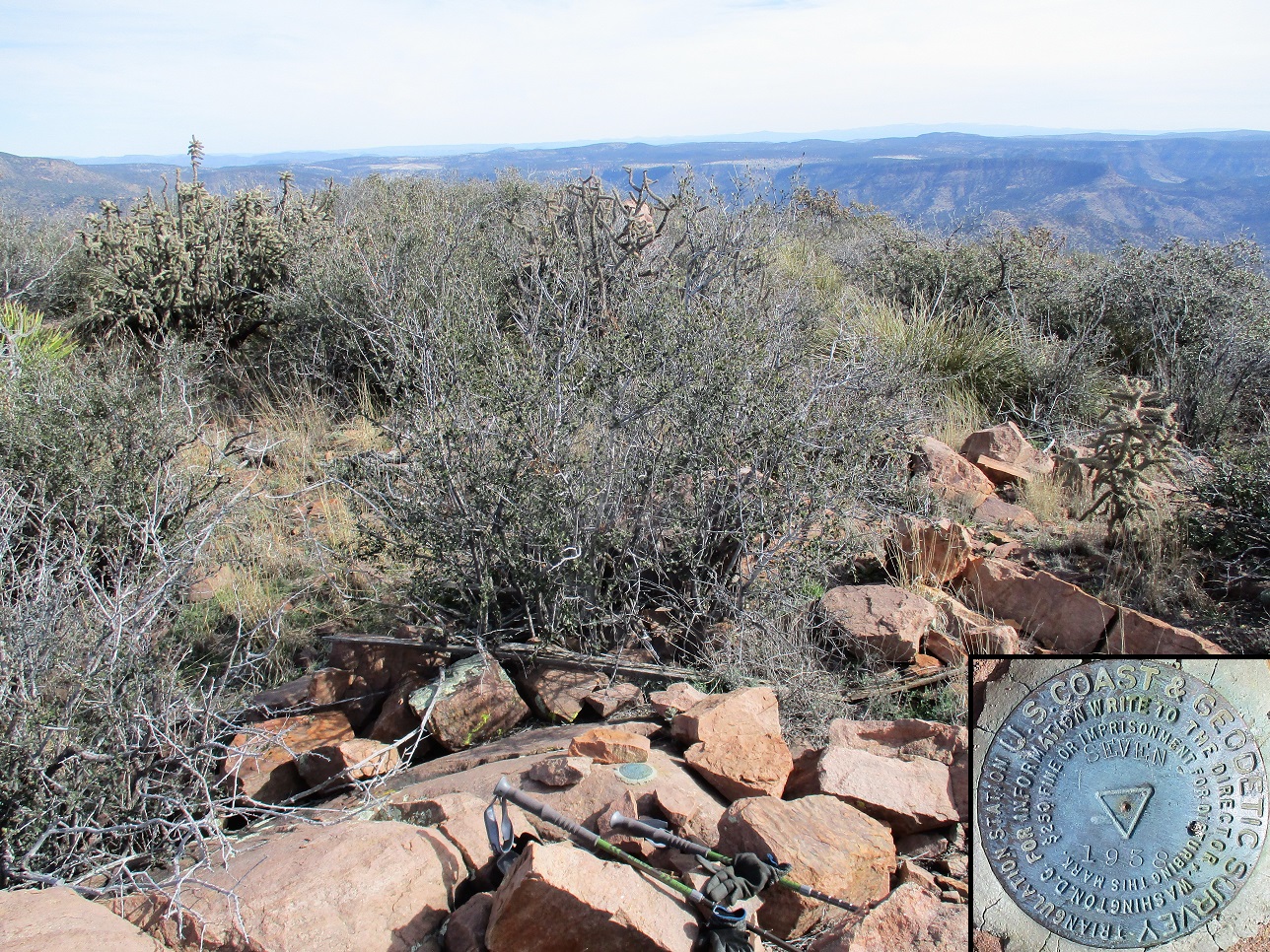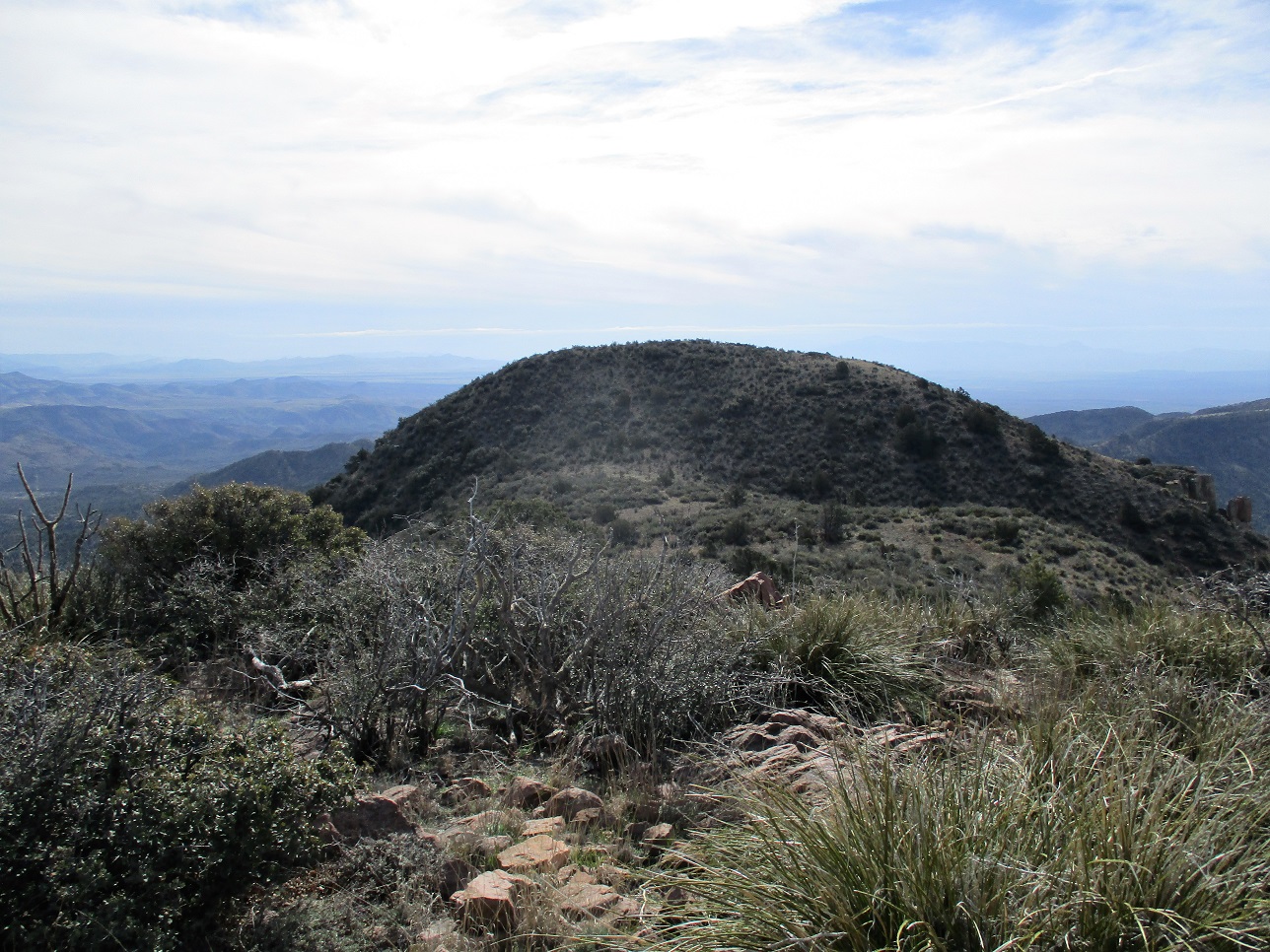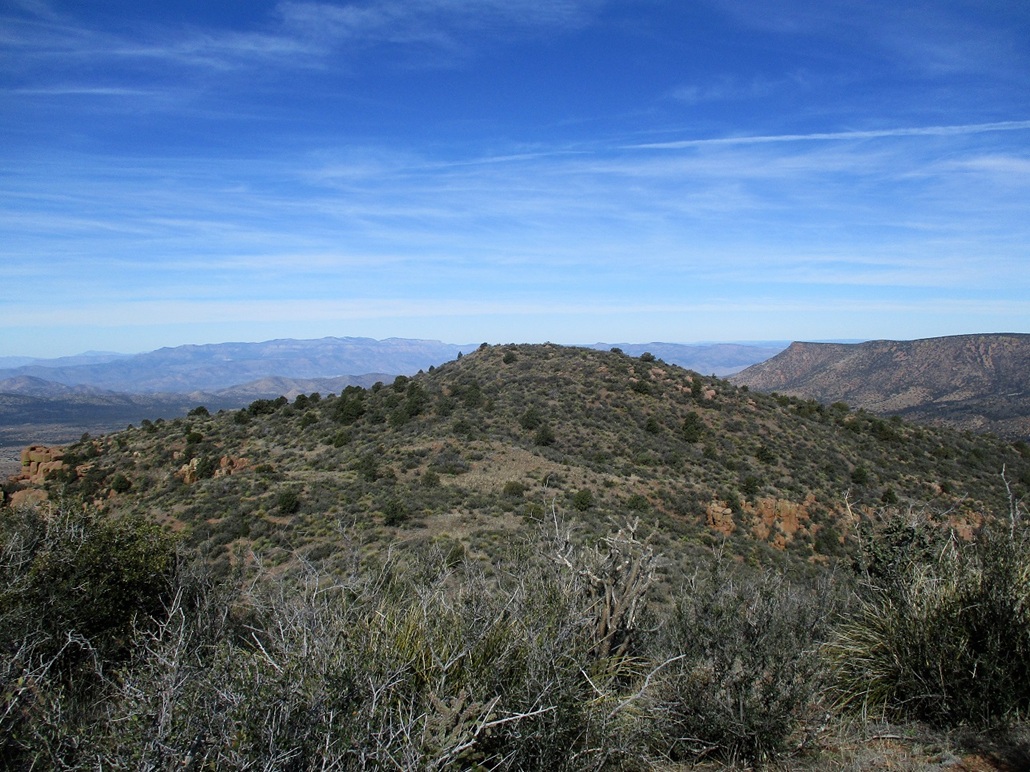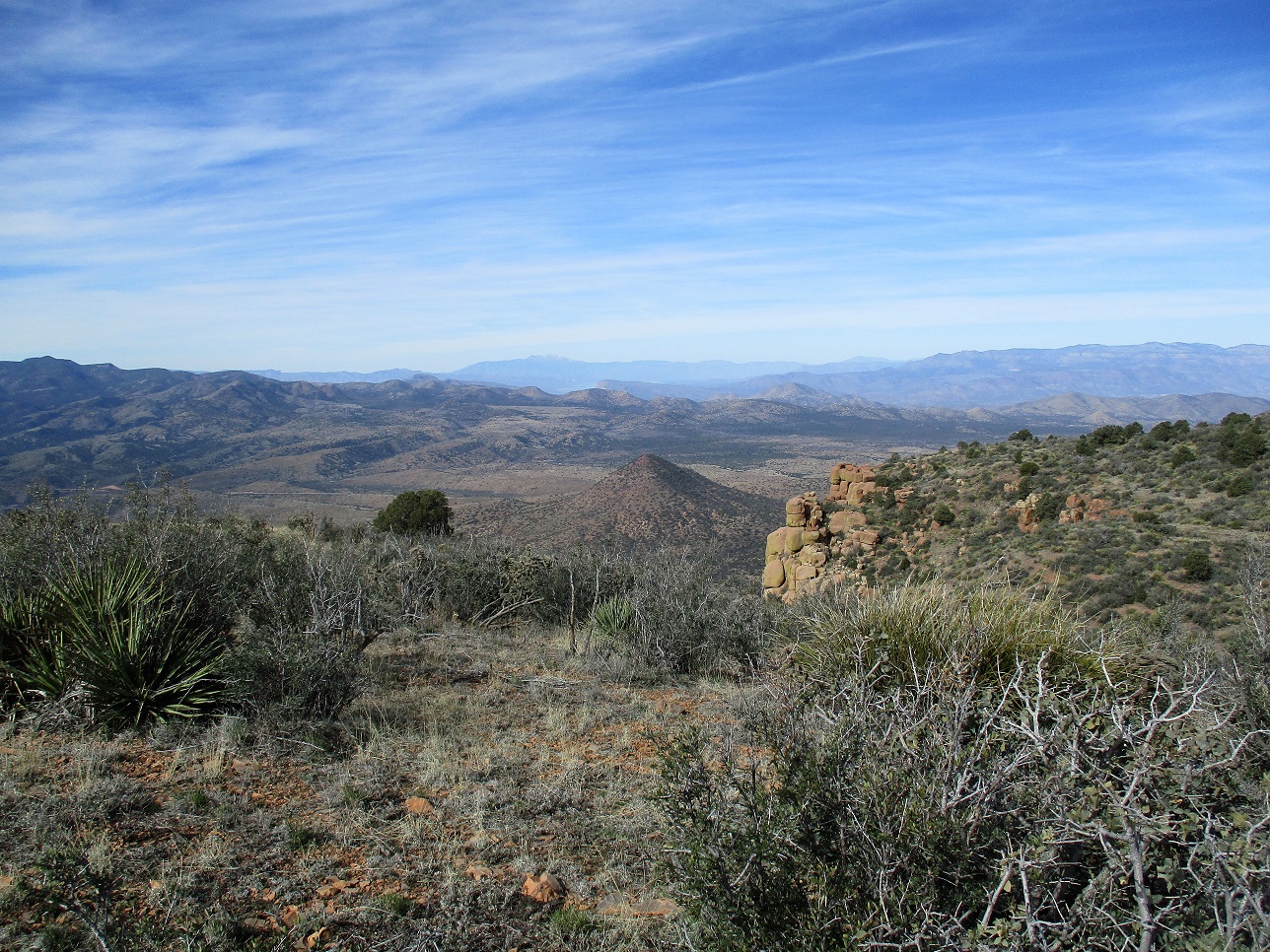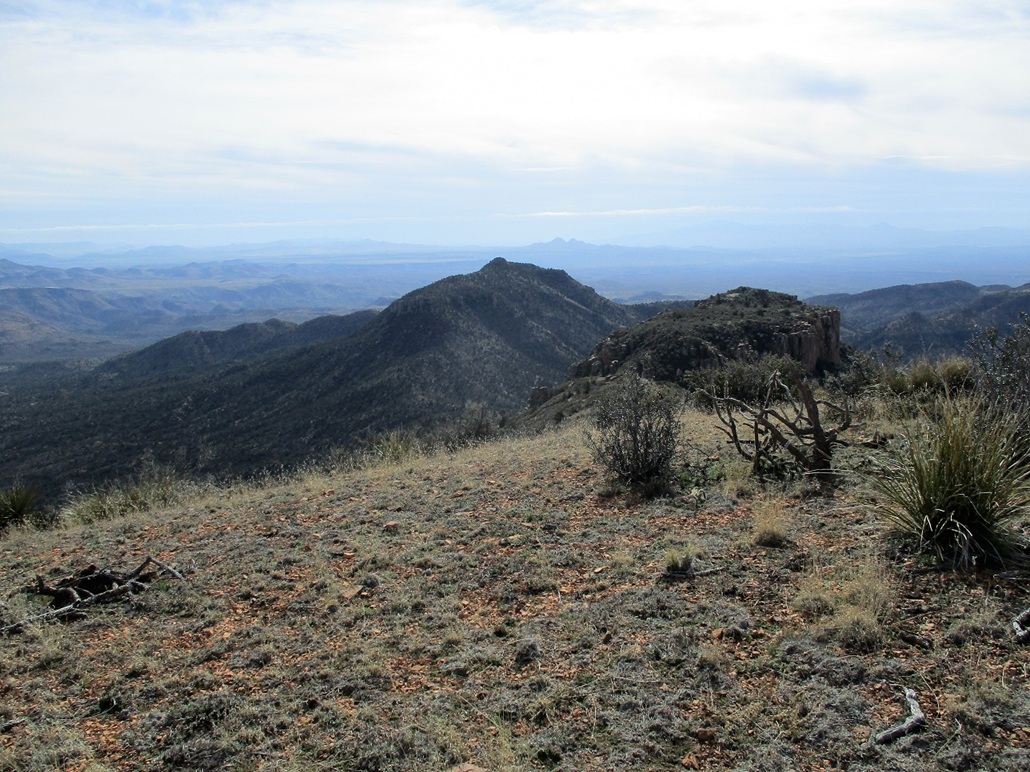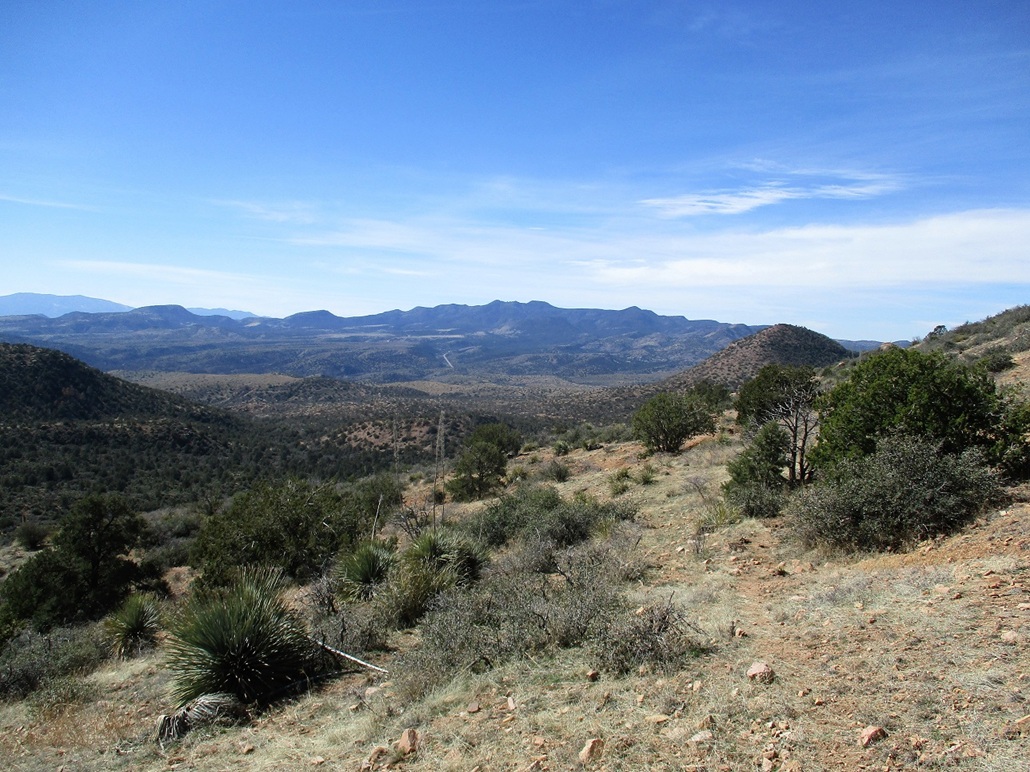
The Mountains of Arizona
• www.surgent.net
|
| Seven Benchmark & Peak 6420 |
• Highpoint: Sevenmile Mountains • Tonto National Forest • Gila County |
|
Date: February 10, 2019
• Elevation: 6,409 feet (BM), 6420 feet
• Prominence: 1,180 feet
• Distance: 5.5 miles
• Time: 4 hours and 40 minutes
• Gain: 2000 feet
• Conditions: Clear and cold, blustery up high
Arizona
•
Main
•
AZ P1K
•
PB
•
LoJ
•
USGS BM Datasheet
The Sevenmile Mountains are about 15 miles north of Globe along US-60. The highest mountain looks impressive from a distance, with cliffs of columnar rock along the top. The left hump of this mountain mass holds the "Seven" benchmark and is listed at 6,409 feet. The presumptive highpoint is the next bump over to the east, with a probable elevation of about 6,420 feet.
I came here with the day open and a spell of clear weather after a front moved through yesterday, and another one expected to in a couple days. I left home before sunrise and was in Globe a little before 8 a.m., getting some snacks for the hike. I then drove northbound on US-60 until I was near the peak. I eased off the highway and onto Tonto Forest Road 339, passing through a gate early, and driving about a quarter mile south-southwest, cresting a rise then dropping slightly to where FR-2323 started, on my left. I parked here, the time 8:15 a.m., with clear skies but very cold: 32 degrees, going by my carís thermometer. I was just below 4,800 feet elevation.
I got everything together, bundled up, locked the car and started walking at 8:20. The sun was behind the mountain for now so everything was in shadow. It was cold, but with no breeze, tolerable. As long as I kept moving, I felt fine. I followed FR-2323 south as it curled around a small hill. The road bent east and came to a stock pond, covered in ice. The road itself ended here. I followed some cow paths through the trees, but then entered into the trees and brush, aiming for the mountainís main east-west ridge.
This little segment was brushy and I had to go up and down a bunch of little rises, each about 10-20 feet, covered in brush but never too bad. Soon, I was out of this drainage mess, and now on the south-facing slopes of the mountain, starting up towards Hill 5312, which sites at the northwest end of the ridge. This part went well, the brush being very light. I gained the saddle just east of Hill 5312, then hiked up another fifty feet to get onto a slightly higher ridge. There were old tire tracks up here, leading to a clearing where cattle congregate. There was a salt-lick here, so someone must come up here occasionally. This part also went quickly. So far, I was doing well and making good time.
Up ahead I could see the steep slopes leading up to the upper mountain. It was covered in green, so I expected a bushwhack, and hoped it would go well. Past the cattle clearing, I followed cattle paths upward, the brush becoming thicker in degrees. I was able to weave through the brush without difficulty, following cow paths and cow poop as often as possible. If these creatures can bulldoze their way up these slopes, then so can I.
There came a point where even the cattle could go no farther. The game trails were narrower and less distinct, and the brush thick. It was mostly about waist or chest high, a mix of mountain oak, sawgrass, cactus and agave. I could always glean out a lane to follow, but it would go for about 20 feet then come to a thicket of agave. There was no way to get through these plants. I often had to double back or go left or right to find new lanes. I made steady progress, but it was slow at times.
As I ascended, I would gauge my progress by looking across the way at Jackson Butte, whose summit is just over 6,100 feet. In time, I could tell I was about at that elevation, and slowly, the steep slopes I was on started to lessen. I even came upon a few boulders and rock outcrops. I hoped this also meant less brush. Unfortunately, the brush just changed flavor. Now I had much more manzanita, and in spots, it was simply impenetrable. There was no way to barge through it, and crawling down low was not going to work. In some cases, I tried about five different lines until I found a meager lane to follow. But no matter what I did, I had a lot of branches tugging at me and scratching me. Up this high, there was a steady breeze. It was quite cold, so I put on my big fleece jacket, which also served as a shield against the constant tugging and grabbing by those pesky plants.
Finally, I could see that I was close, and I came upon the Seven Benchmark rocks, roughly two hours after starting. I was just relieved to not have to battle through more brush. I spent a few minutes here, looking for the benchmark. I found the two witness markers on top of higher boulders in the area, while the benchmark itself was on a large rock flush with the ground, covered over in a small cairn. I snapped an image of it. If the benchmark is listed at 6,409 feet elevation, then the surrounding rocks may rise about 5 more feet in height. The possible elevation of this bump would be roughly 6,414 feet, give or take a foot.
I did not stay here long. My goal was not yet complete. Across the way to the east is another hill about a quarter-mile distant, the probable highpoint of the mountain. I descended off the benchmark hill, dropping about a hundred feet, then across the easy saddle, then up open slopes to this hill. The brush here was spaced out and not a burden at all. I found a summit register within a small cairn. The previous visitor was here in January 2018, then Scott Peavy in February 2016. The log held just a few names going back about twenty years. This peak does not get climbed often and is only of interest to a few people intent on knocking off these prominent range highpoints.
I did not spend a lot of time here either, but I did take a few photos. I then walked down and back up to the benchmark hill. I just wanted to get down those ugly brush slopes, the sooner the better. Going down, I had gravity in my favor. I could also see lanes that I would not have seen coming up. I was able to get through the brush, but it was slow. There were times I still had to barge through a thicket of tangly branches or dance around the cactus and agave spikes.
Finally, I was down off that slope, and happy. I could relax now. The day was lovely and warming up into the low 50s. I took a couple breaks on these lower slopes. Now I just needed to get back to my car. Off the main mountain, I now picked my way through the forest and brush. When I was near the stock tank mentioned earlier, I spooked a cow. It scampered into the trees and watched me. Normally I would walk on by, but this one started screeching and huffing, highly agitated. I feared it might charge me, so I hung a left and walked around the other side of the stock pond, leaving the trees and getting back on that forest road ... all the while hearing that cow make a ruckus.
I was soon back to my car, arriving at 1:05 p.m., a 4-hour and 40-minute hike. I figured two hours to Seven Benchmark, a half-hour to go to peak 6420 and back, then two hours down, plus 10 minutes avoiding that agitated cow. I was really beat. I had a bunch of dings all over me from the branches, and I could feel some cactus spines in me too. I had thought about climbing Rock Springs Butte, a hill immediately west of where I was parked, but I had no energy. I was happy to get this hike done and was tired. I just drove home, arriving in Scottsdale about 3 p.m..
It may sound like I complained a lot about the brush. It was heavy but I got through it. I think I was just more annoyed at it. Iíd see a nice lane and always end up into a thicket of agave and manzanita. That gets old fast. Otherwise, it was scenic and a hard-earned peak. I do think that an approach from the north may work better. Satellite images show a track that gets onto this high ridge (the one I walked on briefly). That may save time for the approach, but I have no idea what the approach roads are like. I would assume that much of it would need to be walked. I would recommend to future visitors to come on a cool day, and wear heavy-duty clothing with gloves. It is a brushy and scratchy climb.
|
|
